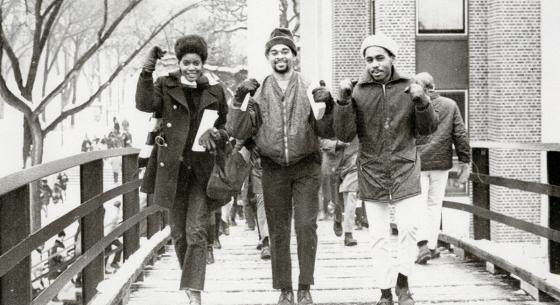Learning from history before it’s too late
New exhibit explores impact of Morrill Hall takeover 50 years ago
With the opening of the Takeover: Morrill Hall, 1969 exhibit in Northrop’s fourth-floor gallery on Jan 22, we invited principals involved with the project to blog about the experience. Jennifer Gunn, director of the Institute for Advanced Study, explains the collaboration and impact of this exhibit:
Partnering with Northrop and the Heritage Studies and Public History program (HSPH) to put together this exhibit has been a wonderful opportunity for seeing firsthand the complexity and value in bringing units doing different work into an interdisciplinary project as equal partners. The Institute for Advanced Study (IAS) has been in conversation over the past year with units on and off campus about how 1968 and 1969 are still relevant today. These conversations have led to the event series 1968-1969: Historic Upheavals, Enduring Aftershocks (with Northrop and the University Honors Program), as well as this collaborative exhibit in the Northrop gallery, in addition to the other displays throughout the building taking place over the course of the academic year.
The year-long collaborative focus on the dramatic events of 1968-69 is a key part of the revitalization of Northrop’s historic role as a key campus-community site for intellectual and cultural engagement. As someone who appreciates how our history still influences us, I am happy to have an exhibit in the building that addresses this important part of the University’s past, especially while we have the opportunity to learn from some of the original participants. Too often we only look at our past when it’s too late. I think this exhibit complements A Campus Divided, but covers more recent history. It also works well in conjunction with the HSPH-curated exhibit Owning Up: Racism and Housing in Minneapolis at the Hennepin History Museum. The University is stronger when we work together to create new knowledge for not only our student population, but also the broader community.
